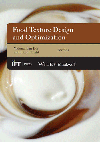Insights: It's Not Pretty

Most of our milk supply ends up in one of two products: Beverages or cheeses. Bottled water has just knocked milk out of second place in the beverage consumption derby. Increases in per capita consumption of cheese have slowed to a snail's pace.
Milk has surrendered more than a gallon of consumption per capita during the past five years. Bottled water has been adding a gallon of consumption a year for about 10 years. In fact, bottled water consumption has more than doubled in the past 10 years; growing to 22.6 gallons during 2003.
A few years ago, we took comfort in the fact that lower fat milk sales were growing, albeit not enough, to help offset declines in whole milk sales. Unfortunately, during the past couple of years, lowfat and fat free milk sales have also slipped below year-earlier levels.
Flavored milk is the only bright spot now. But selling it a pint at a time hasn't been able to offset the erosion of sales of plain milk being sold a gallon at a time.
The optimist in me still thinks milk can stage a recovery, but it will take some hard work. Milk producer and dairy processor promotion groups have laid the groundwork. Now, milk marketers must do the hard work and capitalize on the opportunities in vending and in school feeding programs.
Milk's market strategy has to be aimed at getting kids to drink more milk because it is more readily available and because it tastes better. Then, hopefully, we can make them lifelong milk drinkers.
It has worked for yogurt - the only truly pretty picture in the dairy sales product portfolio. "Yogurt is for women" was the conventional wisdom ten years ago. Then, along came yogurt for kids. Moms knew how good it was for them and it didn't take them long to figure out it was good for kids.
Over two-thirds of all Americans now eat yogurt; 57% of all men. After slipping in the mid-90s, per capita yogurt sales have ticked steadily higher for the past five years.
It took the yogurt strategy awhile to get traction, but it was clearly worth the effort. The current low-carb craze is complicating the yogurt business and won't make the job any easier. But the longer term trend toward better overall nutrition will prevail.

Meanwhile, cheese sales are reportedly being supported by the purveyors of the ‘low-carb' mantra. So, why have gains in per capita sales slowed to a snail's pace?
Because per capita sales of the "Big Two," American and mozzarella, have actually declined each of the past two years. They are falling out of favor in the foodservice business.
Cheeseburgers are being replaced by chicken and salads on menu boards in fastfood restaurants. Pizza makers have tried to rely on low prices instead of creating exciting new products.
American and mozzarella are the ‘whole milk' of the cheese business. Consumers are opting for more full flavored products and specialty cheese sales are doing very well.
Cheeses with high flavor profiles are showing up on top of more and more pizzas. "Would like a slice of provolone on that chicken sandwich, madam?" "Yes," she replies.
As noted earlier, I'm having a bad day. But tomorrow, everything will look better.
Looking for a reprint of this article?
From high-res PDFs to custom plaques, order your copy today!





